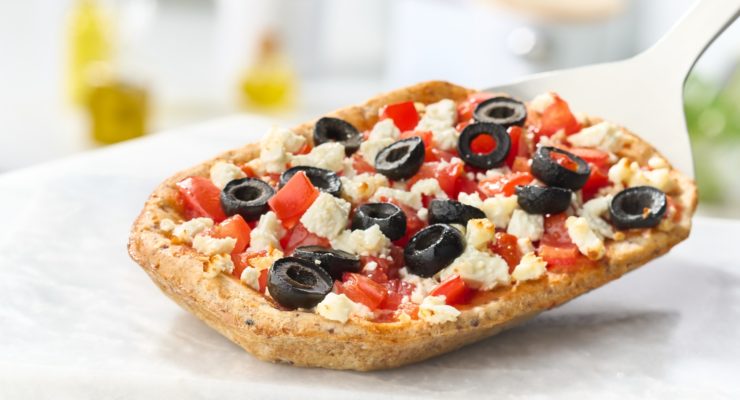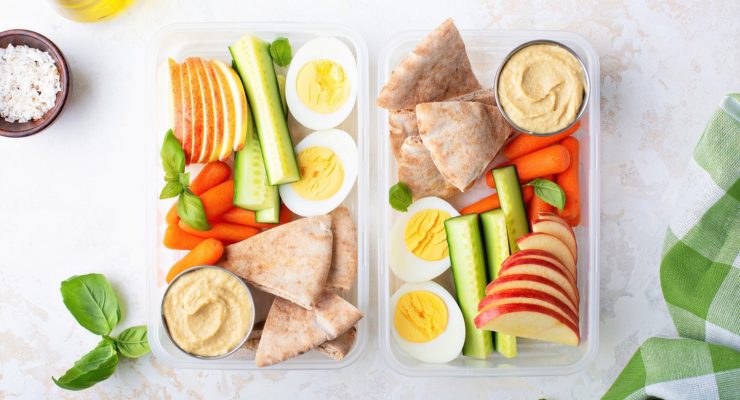Grocery Add-Ins: What are Nutrisystem SmartCarbs?
Article posted in: Nutrisystem for MenCarbs. It seems like anytime the topic of weight loss arises, carbs immediately become the mortal enemy. But did you know that you can actually still drop pounds and get healthy while enjoying carbs like bread, crackers and pasta?
It’s true! The key is selecting nutrient-rich carbohydrates that contain fiber and sticking to proper portion sizes.
What is a SmartCarb?
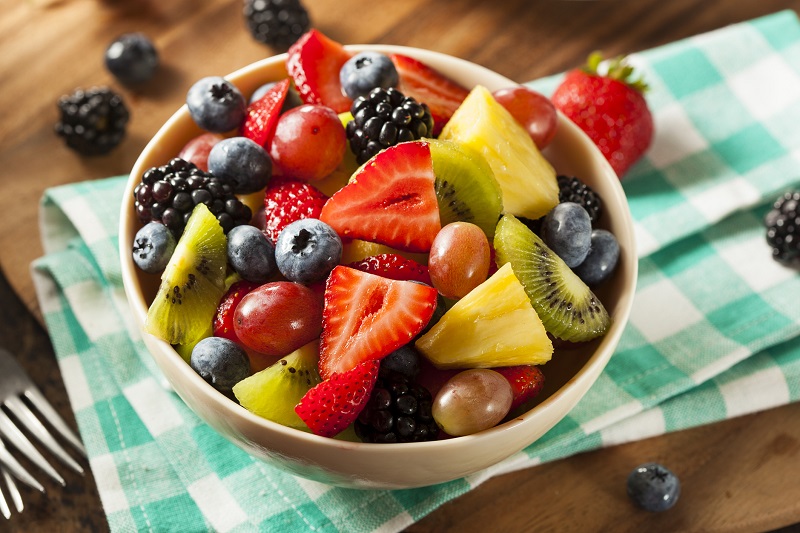
Here at Nutrisystem, we call these nutritious carbs “SmartCarbs.” You will add these healthy ingredients into your meal plan each day. While the number of SmartCarbs will vary based on your specific Nutrisystem meal plan (Check the NuMi app for your plan guidelines!), the definition is the same for everyone:
SmartCarb grocery add-ins are a group of carbohydrates that measure low to medium on the Glycemic Index. The Glycemic Index is a rating system that tells you how quickly a food affects your blood sugar levels after eating it. These carbs are digested more slowly, keeping you feeling fuller longer.
SmartCarbs include items like brown rice, whole wheat pasta, beans, fruit and starchy vegetables like potatoes. We recommend that most of your grocery add-ins come from minimally processed, whole food choices. You can find the most nutrient dense SmartCarb options in the Nutrisystem Grocery Guide!
If you choose to include packaged foods not in the Grocery Guide, be sure they contain between 80-120 calories with at least 3 grams of fiber.
Examples of SmartCarbs
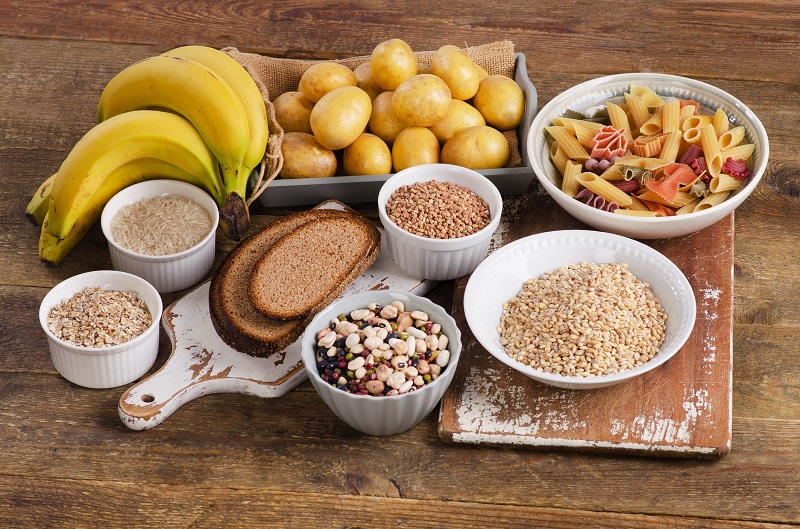
From fruit and starchy vegetables to pasta and bread, there are so many different types of SmartCarbs to choose from. Check out the list below for examples of SmartCarbs that you can include in your weight loss plan. We also provided the proper portion sizes for easy measuring!
Bread, Pasta and Grains
- Bread, 100% whole grain varieties, dark rye, sprouted grains, sourdough, 1 slice for regular varieties or 2 slices for light varieties
- Oatmeal, prepared with water, (old-fashioned, quick oats or steel cut oatmeal) ½ cup cooked, ¼ cup uncooked or 1 packet instant (less than 7 g added sugar per serving)
- Pasta, whole grain and legume-based, ½ cup cooked
- Quinoa, cooked, ½ cup
- Rice, wild or whole grain rice varieties (ex. brown rice, basmati, red or black), ½ cup cooked
Beans and Legumes
- Black Beans, low-sodium or no-salt-added, ½ cup cooked or canned
- Chickpeas, low-sodium or no-salt-added, ½ cup cooked or canned
- Green Peas, no-salt-added, ½ cup cooked
- Hummus, ¼ cup
- Lentils, ½ cup cooked
- Navy Beans, ½ cup cooked or canned
Fruit
- Apples, 1 medium or 1 cup slices
- Banana, 1 medium or 1 cup slices
- Berries, 1 cup (blackberries, blueberries, raspberries)
- Cherries, fresh or frozen with no added sugar, 1 cup
- Grapefruit, 1 medium or 1 cup segments
- Grapes, 1 cup
- Mandarin Oranges, 2 medium or 1 cup segments
- Peaches, 1 medium or 1 cup slices
- Pears, 1 medium or 1 cup slices
- Pineapple, 1 cup chunks
- Strawberries, 1 cup slices or about 14 berries
- Watermelon, 1 cup cubes or about 12 small balls
Starchy Vegetables
- Corn, ½ cup or 1 medium cob
- Green Peas, ½ cup
- Potatoes, 1 small (approx. 3 oz.)
- Sweet Potatoes, 1 small (approx. 3 oz.)
- Winter Squash, all varieties, 1 cup cooked
A Note on Glycemic Index
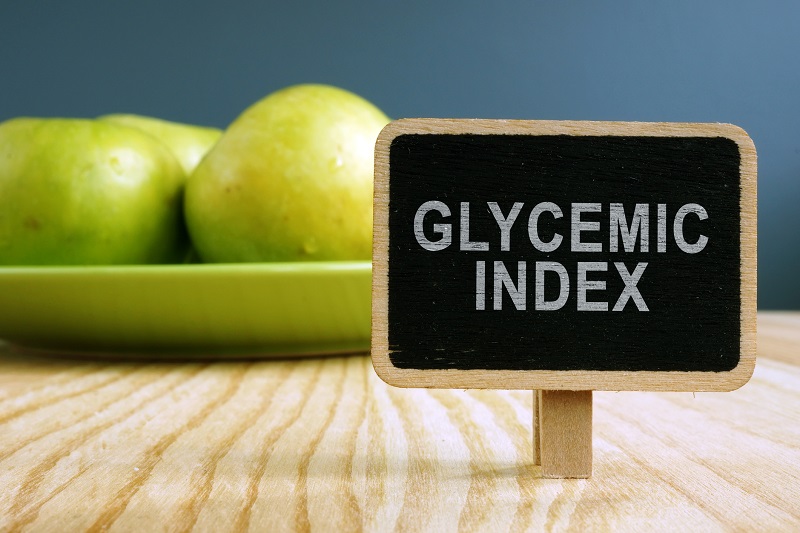
The Nutrisystem weight loss program integrates the science of the Glycemic Index, which measures the quality of carbohydrates and how they impact your blood sugar levels.
Carbohydrates that break down slowly encourage stable blood sugar levels, so they rate “low” on the Glycemic Index. The slow and steady breakdown of low glycemic carbs helps to sustain energy levels and promotes a greater feeling of fullness.
On the other hand, carbohydrates that breakdown quickly cause your blood sugar levels to rapidly spike and crash, so the carbs rate “high” on the Glycemic Index. The rapid spikes in blood sugar levels from high glycemic carbs leave your body primed to store fat, while the crashes that follow leave you tired and hungry.
Food high in protein, fat or fiber typically have a lower Glycemic Index. Food high in refined carbs and sugar have a higher glycemic value. Foods that contain no carbs (meat, herbs, spices, and oils) do not have a glycemic value because of their minimal impact on blood sugar levels.
If you’re looking to lose weight, you should minimize high glycemic carbs and instead, seek to incorporate more lower glycemic options into your diet to help keep your blood sugar levels stable and your appetite in check. With the recommended combination of low to medium glycemic grocery items (Hint: SmartCarbs!) and the high protein, high fiber Nutrisystem meal plan, we do the work for you.



